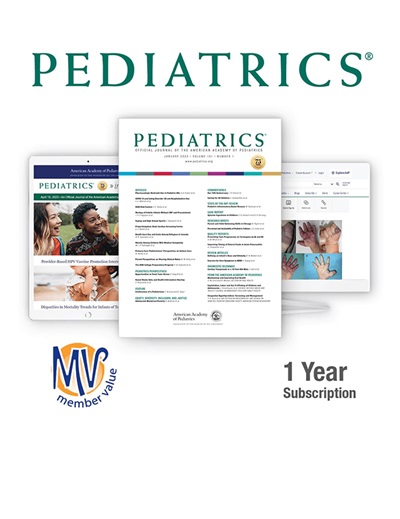氯尼丁作为新生儿阿片类药物戒断综合征的单一疗法:随机试验
IF 6.2
2区 医学
Q1 PEDIATRICS
引用次数: 0
摘要
目的我们试图确定非阿片类药物α-2-肾上腺素能激动剂氯尼丁是否能有效治疗新生儿阿片类药物戒断综合征(NOWS)。入组标准包括:产前曾接触过阿片类药物、胎龄≤7天、胎龄≥35周、无其他疾病以及需要药物治疗。结果共筛选出 1107 名患者入选(645 名不符合条件,91 名家长或工作人员不在,216 名拒绝入选,155 名同意入选)。在 155 名婴儿中,有 120 名需要治疗,他们被随机分配接受口服氯尼丁(n = 60),剂量为 1 µg/kg/d 或吗啡(n = 60),剂量为 0.06 mg/kg/d,每 3 小时一次。如果婴儿的病情没有改善,则每隔 12-24 小时将剂量增加初始剂量的 25%。第四次剂量增加后仍无改善的婴儿则接受辅助治疗。吗啡和氯尼地平的治疗时间没有差异,中位数(95% 置信区间 [CI])分别为 15 天(13-17 天)和 17 天(15-19 天),P = .48。克隆尼丁治疗组需要辅助治疗的婴儿更多(45%),而吗啡治疗组为 10%,调整后的几率比(95% CI)= 8.85 (2.87-27.31)。治疗结束后,NICU 网络神经行为量表的总分在接受氯尼丁治疗的婴儿和接受吗啡治疗的婴儿之间没有差异。氯尼定似乎是一种治疗 NOWS 的有效非阿片类药物。未来的研究还需要确定最佳的氯尼定剂量,以加快反应速度并减少辅助治疗。本文章由计算机程序翻译,如有差异,请以英文原文为准。
Clonidine as Monotherapy for Neonatal Opioid Withdrawal Syndrome: A Randomized Trial.
OBJECTIVE
We sought to determine whether clonidine, a non-opioid α-2-adrenergic agonist, would effectively treat neonatal opioid withdrawal syndrome (NOWS).
METHODS
This was an intention-to-treat randomized clinical trial. Enrollment criteria included prenatal opioid exposure, age ≤7 days, gestational age ≥35 weeks, no other medical condition, and need for pharmacotherapy. Primary outcomes were length of treatment and neurobehavioral performance.
RESULTS
A total of 1107 patients were screened for enrollment (645 ineligible, 91 parents or staff unavailable, 216 declined, 155 consented). Of 155 infants, 120 required treatment and were randomized to receive oral clonidine (n = 60) at 1 µg/kg/dose or morphine (n = 60), 0.06 mg/kg/dose, every 3 hours. Infants with no improvement had their doses increased by 25% of the initial dose every 12 to 24 hours. Those without improvement by the fourth dose increase, received adjunct therapy. Length of treatment did not differ between morphine and clonidine, with median (95% confidence interval [CI]) days, respectively, of 15 (13-17) and 17 (15-19), P = .48. More clonidine-treated infants (45%) needed adjunct therapy versus 10% in the morphine group, adjusted odds ratio (95% CI) = 8.85 (2.87-27.31). After treatment completion, the NICU Network Neurobehavioral Scales summary scores did not differ between clonidine-treated and morphine-treated infants.
CONCLUSIONS
Length of pharmacologic treatment and final neurobehavioral performance were not significantly different between the clonidine- and morphine-treated groups. Clonidine appears to be an effective non-opioid medication to treat NOWS. Future studies are needed to determine the optimal clonidine dosage for a quicker response and obviation of adjunct therapy.
求助全文
通过发布文献求助,成功后即可免费获取论文全文。
去求助
来源期刊

Pediatrics
医学-小儿科
CiteScore
12.80
自引率
5.00%
发文量
791
审稿时长
2-3 weeks
期刊介绍:
The Pediatrics® journal is the official flagship journal of the American Academy of Pediatrics (AAP). It is widely cited in the field of pediatric medicine and is recognized as the leading journal in the field.
The journal publishes original research and evidence-based articles, which provide authoritative information to help readers stay up-to-date with the latest developments in pediatric medicine. The content is peer-reviewed and undergoes rigorous evaluation to ensure its quality and reliability.
Pediatrics also serves as a valuable resource for conducting new research studies and supporting education and training activities in the field of pediatrics. It aims to enhance the quality of pediatric outpatient and inpatient care by disseminating valuable knowledge and insights.
As of 2023, Pediatrics has an impressive Journal Impact Factor (IF) Score of 8.0. The IF is a measure of a journal's influence and importance in the scientific community, with higher scores indicating a greater impact. This score reflects the significance and reach of the research published in Pediatrics, further establishing its prominence in the field of pediatric medicine.
 求助内容:
求助内容: 应助结果提醒方式:
应助结果提醒方式:


